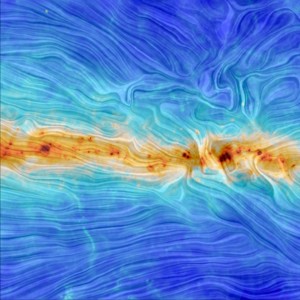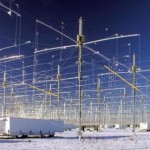Archive for the ‘Science’ Category
Off the Beam: Did a U.S. Radar Station Disable Russia’s Mars Probe? [via SciAm]
Thursday, December 22nd, 2011Soon after the ill-fated Phobos-Grunt spacecraft stalled in Earth orbit, a former Russian official implicated “powerful American radars” in Alaska. Is there a basis to the claim, or is it just scapegoating?
By Jim Nash | Wednesday, December 14, 2011 | 32
After 19 attempts over 51 years, Russia has yet to chalk up a fully successful mission to Mars. That includes its ambitious Phobos–Grunt probe, launched November 8 from Kazakhstan and now stranded in low Earth orbit. Unable to regain control of the spacecraft, the Russians now expect it to fall back to Earth around January 9.
Responding to shame over the nation’s Mars program, Russian President Dmitry Medvedev has threatened to criminally prosecute those responsible if possible. Soon after Medvedev’s comments, a former high-ranking Russian officer found a more convenient scapegoat in a remote Alaskan radar facility. But an analysis of the timing and physics involved shows that there is little basis for the claim.
Phobos–Grunt was to retrieve soil (“grunt” in Russian) from the Martian moon Phobos and return it to Earth for study. But the rocket engine intended to boost the spacecraft into a higher orbit failed. The probe itself has since communicated only sporadically with ground stations, and even then it has murmured only unintelligible noise.
To Lt. Gen. Nikolay Rodionov, a retired commander of Russia’s ballistic missile early warning system, U.S. technology could have caused the rocket malfunction. In a November 24 interview with the Russian news agency Interfax, Rodionov said “powerful American radars” in Alaska “could have influenced the control systems of our interplanetary rover.”
Rodionov was quoted saying the U.S. wants to use the ionosphere as part of its missile defense, although he did not elaborate. A subsequent article in India’s The Hindu expanded on Rodionov’s statement, indicating that he was likely referring to the U.S.’s High Frequency Active Auroral Research Program (HAARP) observatory established in 1993.
The HAARP research station sits on an Air Force–owned site in Gakona, Alaska, and falls under the aegis of a number of federal and state agencies, primarily theAir Force Research Laboratory’s Space Vehicles Directorate. HAARP scientists have developed the project and the site’s instrumentation with help from several U.S. universities and educational institutions—in particular, the University of Alaska Fairbanks.
HAARP performs active and passive radar experiments on the ionosphere, a layer of charged particles stretching from 50 to 1,000 kilometers above Earth. The main goal is to better understand the layer, which has been used almost since the invention of radio to bounce signals far past the horizon, extending a signal’s range. The ionosphere does not always reflect signals in a predictable manner, however, which makes it a bit of a gamble for those wanting to use it to communicate critical information. Increasing, standardizing or augmenting that effect could have potent commercial and military applications, such as potentially using reflected signals to probe underground or underwater and even to communicate with submarines.
Given HAARP’s main goal of studying how signals are reflected, in the hopes of improving long-range communications, the station fires a radar beam to excite a localized patch of the ionosphere and uses passive devices in Gakona and elsewhere to examine the effects. HAARP scientists essentially are examining the resonant interaction between the radio waves and charged particles. HAARP “is like sticking your finger in a river, and by watching the water flow around your finger you can learn things about the river,” such as its flow speed and its temperature, says Morris Cohen, a research scientist at Stanford University whose Ph.D. thesis was about HAARP experiments.
Whereas similar radar facilities exist in Norway, Russia, Peru and other locations, HAARP is one of the most powerful. Its Ionospheric Research Instrument (IRI) puts out a maximum of 3.6 megawatts sending signals at 2.8 to 10 MHz—powerful enough heat up a small (on a global scale) but measurable part of the ionosphere. The energy being added to the area can be measured in several ways, including gauging how much the section expands when it is heated and how it glows. Both effects are incredibly subtle, requiring highly sensitive equipment to record it, and they’re orders of magnitude less powerful than the effects of ordinary solar weather that constantly bombards the ionosphere.
But is the transmitter powerful enough to have fried the electronics of Russia’s Mars mission?
The answer is categorically no, according to Craig Selcher, HAARP program manager with the Air Force Research Laboratory’s Space Vehicles Directorate at Kirtland Air Force Base, N.M. For starters, HAARP’s IRI has not been operated since September 3, he says.
But even if the IRI had been on during the early days of the Mars mission, the beam couldn’t have had any real impact on the craft. The beam’s energy, although strong enough to affect overflying airplanes, which have an operating ceiling of about 26 kilometers (in Earth’s stratosphere), is too diffuse by the time it reaches the ionosphere, part of the planet’s upper atmosphere. Phobos–Grunt’s orbit has been between 200 and 400 kilometers.
It turns out that the beam is indeed diffuse at that height. The maximum energy that Phobos–Grunt could have felt from HAARP would have equaled a power density of 1.03 milliwatts per square centimeter, according to Selcher. That is like shining a 60-watt lightbulb on the craft from 21 meters, he says. The sun, on the other hand, blasts the top of the atmosphere with an average of 135,100 milliwatts per square centimeter.
In fact, Cohen says, “HAARP routinely points itself at full power towards certain satellites” that monitor what happens at the top of the ionosphere above an IRI beam. He also notes that despite the relative density of low Earth orbit–satellites, HAARP has not damaged a single one.
None of these counterpoints is likely to allay the fears of the conspiratorially minded, who have argued that HAARP’s technology is a U.S. weapon used to trigger earthquakes (including the recent ones in Japan and Haiti), create destructive weather, and even control minds. So charges like Rodionov’s will continue unless, that is, HAARP can control minds. In that case, things will quiet down soon enough.
NOTE: This is a repost from Scientific American. See the original SciAm post here.



